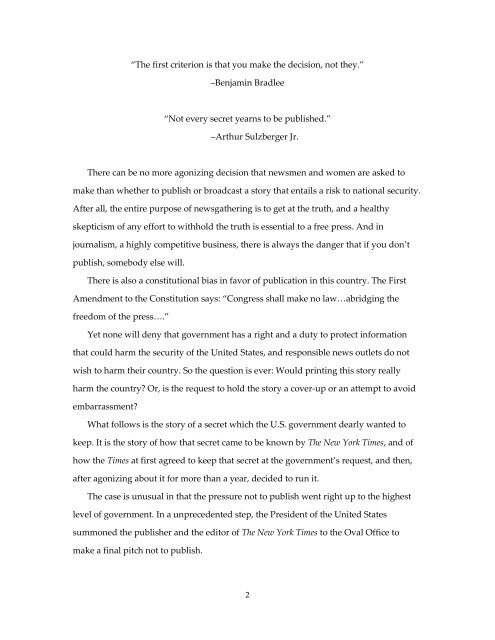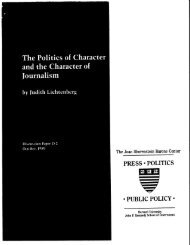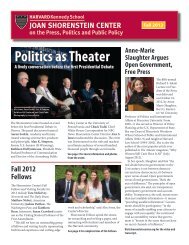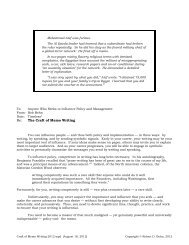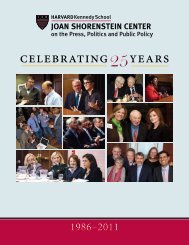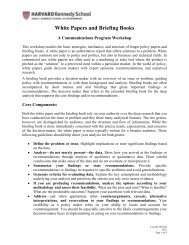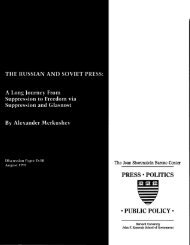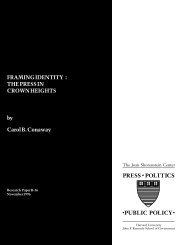Anatomy of a Secret - Harvard Kennedy School
Anatomy of a Secret - Harvard Kennedy School
Anatomy of a Secret - Harvard Kennedy School
Create successful ePaper yourself
Turn your PDF publications into a flip-book with our unique Google optimized e-Paper software.
“The first criterion is that you make the decision, not they.”<br />
–Benjamin Bradlee<br />
“Not every secret yearns to be published.”<br />
–Arthur Sulzberger Jr.<br />
There can be no more agonizing decision that newsmen and women are asked to<br />
make than whether to publish or broadcast a story that entails a risk to national security.<br />
After all, the entire purpose <strong>of</strong> newsgathering is to get at the truth, and a healthy<br />
skepticism <strong>of</strong> any effort to withhold the truth is essential to a free press. And in<br />
journalism, a highly competitive business, there is always the danger that if you don’t<br />
publish, somebody else will.<br />
There is also a constitutional bias in favor <strong>of</strong> publication in this country. The First<br />
Amendment to the Constitution says: “Congress shall make no law…abridging the<br />
freedom <strong>of</strong> the press….”<br />
Yet none will deny that government has a right and a duty to protect information<br />
that could harm the security <strong>of</strong> the United States, and responsible news outlets do not<br />
wish to harm their country. So the question is ever: Would printing this story really<br />
harm the country? Or, is the request to hold the story a cover-up or an attempt to avoid<br />
embarrassment?<br />
What follows is the story <strong>of</strong> a secret which the U.S. government dearly wanted to<br />
keep. It is the story <strong>of</strong> how that secret came to be known by The New York Times, and <strong>of</strong><br />
how the Times at first agreed to keep that secret at the government’s request, and then,<br />
after agonizing about it for more than a year, decided to run it.<br />
The case is unusual in that the pressure not to publish went right up to the highest<br />
level <strong>of</strong> government. In a unprecedented step, the President <strong>of</strong> the United States<br />
summoned the publisher and the editor <strong>of</strong> The New York Times to the Oval Office to<br />
make a final pitch not to publish.<br />
2


